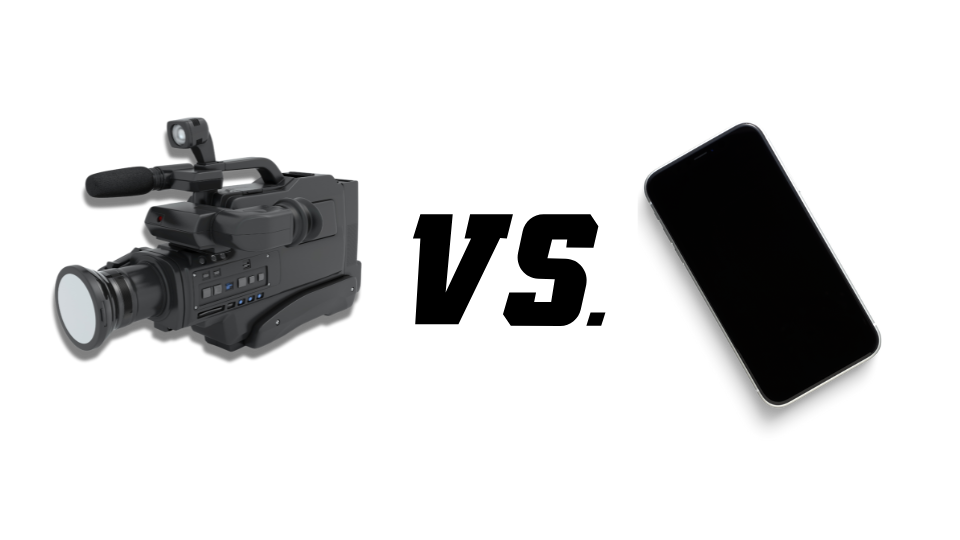Video Production Live Streams vs Smartphone Live Streams: Which One is the Best Fit?
Live streaming is a powerful tool for reaching a larger audience and has become an essential part of event media. While larger events like conferences, sports, and concerts may benefit from a professional video production company’s expertise and equipment, smaller events or on-the-go streaming can be accomplished using a smartphone. In this article, we will explore the pros and cons of both options, helping you determine the best approach to take for your next live stream.
When deciding whether to hire a video production company or use a smartphone to live stream an event, consider the scale, budget, type, and formality of the event. Larger events may require a professional crew and equipment for high-quality video and audio. Smartphone live streaming can be a more affordable option for smaller events with fewer production requirements. The event’s formality and type can also impact the decision, with more formal events often requiring a higher level of production value. Ultimately, it’s important to weigh the advantages and shortcomings of both options to determine which one is the best fit for your event.
Full production Live Streams
One of the biggest advantages of a full production live stream is the ability to capture the event from multiple angles using multiple cameras. This ensures that viewers online can see everything that is happening, and it also allows for more creative shots and angles. Additionally, multiple audio sources can be used to produce higher quality audio for a broadcast. For example, microphones can be placed in strategic locations around the event space to capture clear audio from speakers, performers, and the audience.
When it comes to the cameras used for full production live streams, professional, powerful cameras are typically used, allowing for better image quality and zoom without grainy or distorted footage. This is particularly important for larger events where viewers may not be able to see everything that is happening. Having professional cameras that can also record video also means you create redundancy for your recordings. If for some reason the main program recording becomes corrupt, you still have the footage from the cameras and can recreate a video-on-demand of the event with the multiple cameras.
Another advantage of full production live streams is the ability to integrate multimedia. This means that you can play pre-recorded videos, audio, slideshows, graphics, and even smartphone live video within the live stream. This can make for a more engaging and dynamic viewing experience. Full production live streams also allow you to stream to multiple platforms at the same time, increasing your reach to a larger audience.
While full production live streams have many advantages, there are also some downsides to consider. One of the biggest downsides is cost. Full production live streams require specialized equipment and skilled professionals to operate them, making them more expensive than smartphone live streams.
Additionally, full production live streams require more planning and preparation than smartphone live streams. You will need to work closely with the production team to ensure that everything is set up and ready to go before the event. A lot of the time, it requires having a production company hired quite a bit of time prior to the event, even up to a few months beforehand.
Smartphone Live Streams
One of, if not the biggest advantage of live streaming from a Smartphone is how easy it is to get a live stream going. The Netflix movie “Hustle” starring Adam Sandler and Juancho Hernangomez showcases a prime example of this. At one point, Stanley (Adam) and Bo (Juancho) go to a city basketball court and start challenging players to 1-1 basketball. Once this happens, spectators pull out their smartphones and start live streaming the 1-1 matches to social media, where it proceeds to go viral. The ability to go live in such a short notice is not possible for a full production crew. Imagine trying to bring out computers, multiple cameras and microphones to try to set up and broadcast something like this, it just doesn’t make sense.
Vertical format video has become increasingly popular in recent years due to the rise of mobile viewing. As more and more people consume content on their smartphones, vertical video has become a popular format as it fills the entire screen of a mobile device, making it more immersive for viewers. The vertical format can be particularly appealing to younger audiences who are accustomed to consuming content on their mobile devices. By creating live content that fits the way they watch and interact with videos, creators can increase engagement and connect with their target audience more effectively.
All mainstream social media apps now support live streaming, for both mobile devices and full productions. Setting up a full desktop live stream usually requires a third party live streaming software, and knowing how to access the website’s stream key, essentially the live stream password. Smartphones, on the other hand, can simply open the app, tap Live on the app, and then hit start. This simplicity makes smartphones very appealing for many event planners to choose to live stream on the smartphone. Not only does this reduce set up time, but also reduces expenses, since most people nowadays have a smartphone capable of live streaming.
While smartphone live streaming has become increasingly popular due to its convenience and accessibility, there are some notable disadvantages to consider. One significant drawback is the limited quality of both audio and video. Smartphones are designed to be versatile devices and are not optimized for broadcasting high-quality video and audio. This means that viewers may experience lagging, buffering, or pixelated images during the stream. Additionally, the microphone on a smartphone is not suitable for capturing high-quality audio, which can result in muffled or distorted sound.
Another disadvantage of smartphone live streaming is the limited production value. Since a smartphone is essentially a one-person operation, there is a limit to what can be captured and conveyed during the stream. The camera angles and movements are limited, and there is no ability to incorporate other multimedia elements, such as graphics or pre-recorded footage. This can make the stream less engaging and less dynamic, which may not be suitable for certain types of events, such as conferences or product launches, where the goal is to showcase a brand or a product in the best light possible.
Best of Both Worlds
Although full production live streams and smartphone live streams have their own advantages and disadvantages, they don’t have to be mutually exclusive. In fact, it’s possible to use a combination of both to enhance the overall viewing experience. A professional production crew can be hired to broadcast the event while a smartphone can be used to promote and give behind-the-scenes coverage of the event. It’s crucial for those who want to live stream their events to understand their goals and priorities, which will help them decide whether a smartphone live stream or a professional production is the right choice. Regardless of the choice, a successful live stream requires careful planning and execution to ensure that the audience has the best possible experience.

